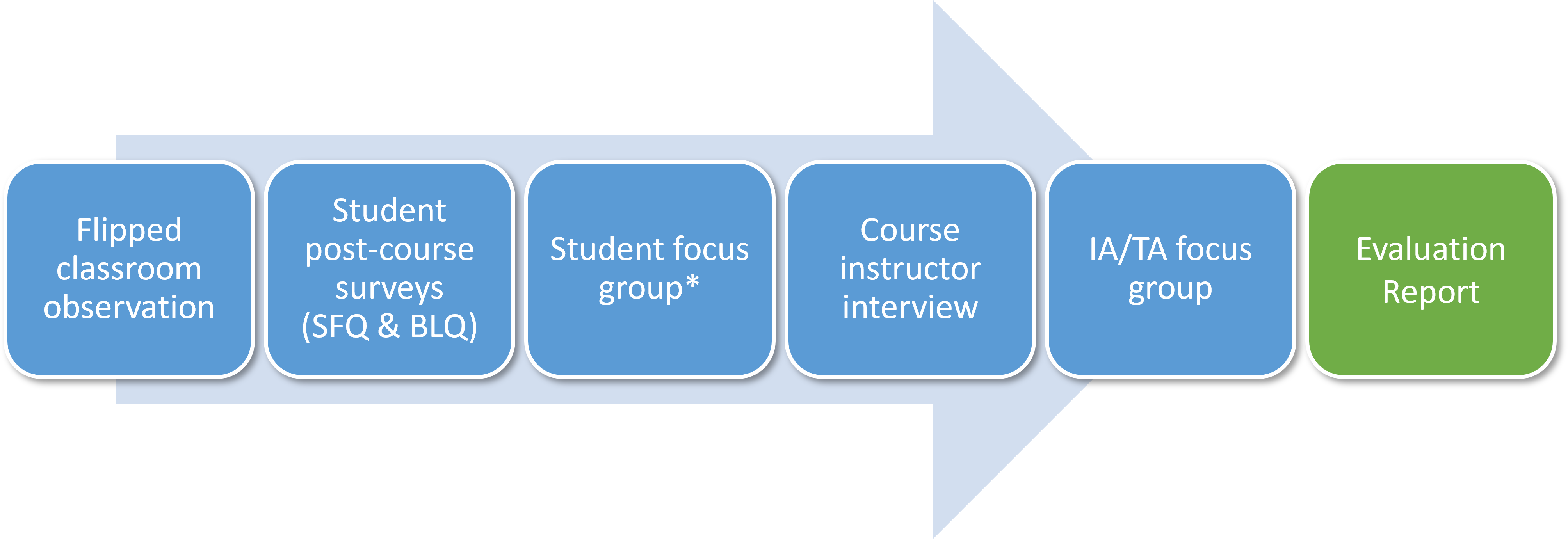HKUST's Evaluation Framework
As part of the efforts to create and establish good models for Blended Learning (BL) courses at HKUST, all of the current BL courses take part in an evaluation process. Data is collected from all stakeholders and analyzed to highlight good practices, challenges and areas for improvements.
A series of evaluation activities will be conducted to collect data about the experience, attitudes, and opinions of the teaching staff and students on a BL course. Details of the evaluation activities are summarized in the table below.

- Large Teaching & Learning Innovation Projects (L-TLIP)
- Blended Learning & MOOC Blended Learning & MOOC
- Teaching and Learning Innovation Projects Teaching and Learning Innovation Projects
- Education and Generative AI Fund Education and Generative AI Fund
- UGC's Strategic Grants
- The Academy of Education Excellence (AEE) The Academy of Education Excellence (AEE)
- HKUST eLearning Strategy
- eLearning Workshops
- New Faculty Program New Faculty Program
- Our Strategic Alliances
- Generative AI & Education Generative AI & Education
- Augmented and Virtual Reality
- Blended Learning Blended Learning
- Graduate Teaching Assistant Program Graduate Teaching Assistant Program
- Experiential Learning
- Teaching and Learning Symposium
- Gamification & Game-based Learning
- Seminars & Workshops
- MOOC MOOC
- Learner-centered Course Design Learner-centered Course Design
- Online Teaching - Real-time Online
- Online Teaching - Mixed Mode Teaching
- People
- News
- Contact Us
- Institutional Learning Technologies
- Active Learning Tools and Proposed Usage
An evaluation report consolidating responses, comments and suggestions from different stakeholders will be released to the course team after course completion.
(The 5 Pillars)
The framework focuses on five areas of evaluation:
- Learning effectiveness
- Scale (cost effectiveness and commitment)
- Access
- Faculty satisfaction
- Student satisfaction
It describes the goals of each of these elements and discusses some possible metrics.
The 5 Pillars of Quality Online Education
https://onlinelearningconsortium.org/about/quality-framework-five-pillars/
by Online Learning Consortium OLC
(Arbaugh, Cleveland-Innes et al., 2008)
The Community of Inquiry Survey Instrument identifies three areas of evaluation:
- Teaching presence
- Social presence
- Cognitive presence
The survey consist of a 34 statements. To view the survey go to the website above and click on Download the Col survey.
The Col Survey
https://coi.athabascau.ca/coi-model/coi-survey/
Blended Learning Toolkit
The Blended Learning Toolkit was prepared by the University of Central Florida and the American Association of State Colleges and Universities. It provides two separate surveys exploring the experience of the students and the faculty members involved in the blended course.
Blended Learning Toolkit
https://blended.online.ucf.edu/2011/06/07/survey-instruments/
by the Blended Learning Toolkit
It is also worth exploring some of the other resources on the Blended Learning Toolkit page, including the Process of creating a course, examples of blended courses, and effective practices.

